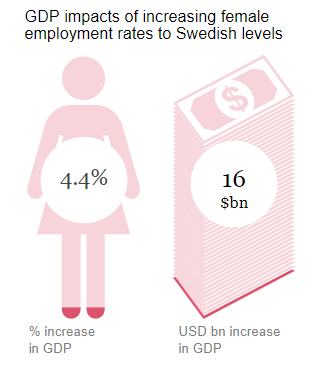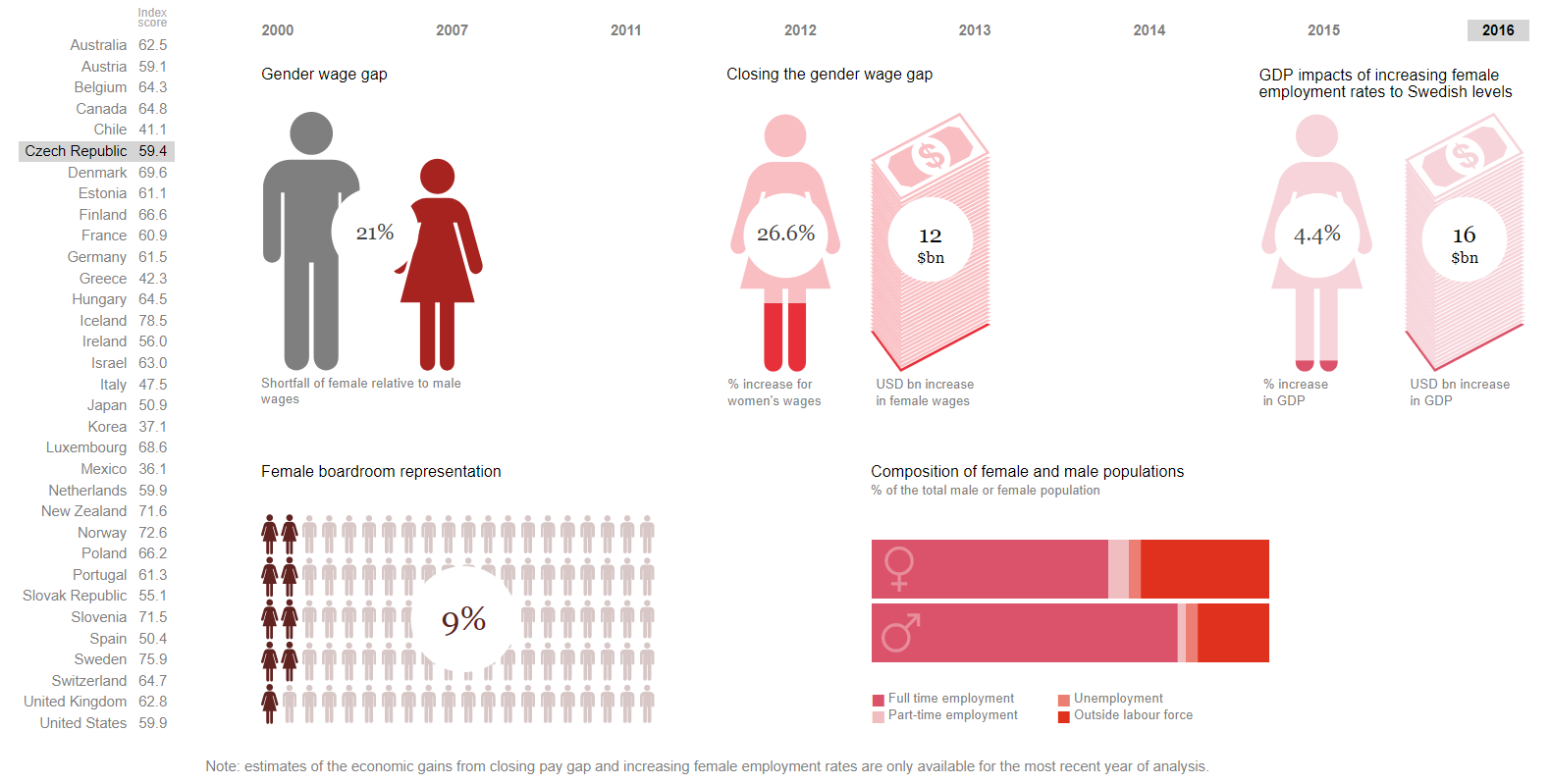4th April 2018
PwC Women in Work Index 2018: What's driving the gender pay gap and what gains can be made from closing it?

This year’s update of PwC UK Women in Work Index shows that the OECD has continued its gradual progress towards greater female economic empowerment. The Nordic countries, particularly Iceland, Sweden and Norway, continue to occupy the top positions on the Index.
We also explore the drivers of the gender pay gap across the OECD in this year's update. We find that government spending on family benefits, the share of female entrepreneurs, maternity leave and occupational segregation help explain the gender pay gap. The gains from closing the gap are substantial: achieving pay parity in the OECD could increase total female earnings by US$2 trillion.
Key findings
- Iceland, Sweden and Norway remain the top 3 performing OECD countries.
- The UK has fallen back from 14th to 15th position as improvements in female job market conditions and the gender pay gap in other countries has outpaced the gains achieved in the UK.
- Poland stands out for achieving the largest annual improvement, rising from 12th to 9th place due to a fall in female unemployment and an increase in the full-time employment rate for women.
- Luxembourg has seen the biggest improvement in its rank over the long-term, while Portugal has seen the largest negative movement.
- Our analysis of the drivers of the gender pay gap across the OECD shows that government spending on family benefits, the share of female entrepreneurs, maternity leave and occupational segregation help explain the gender pay gap.
- Government policies to reduce the gender pay gap should focus on enhancing social support to families to help women stay in, or return to work, and promoting female entrepreneurship.
- Business can also help by improving opportunities for working women in higher-paying, higher-skilled roles through greater flexibility.
- Fully closing the gender pay gap could increase total female earnings by US$2 trillion across the OECD.
- There are significant economic benefits in the long-term from increasing the female employment rate to match that of Sweden. The GDP gains across the OECD could be over US$6 trillion

Gender pay gap in the Czech Republic reached 21% and female boardroom representation reached 9% in 2016. Increasing female employment rates to Swedish levels would mean a GDP increase by 4.4%, the study says.
>> Read the report.
Source: PwC UK